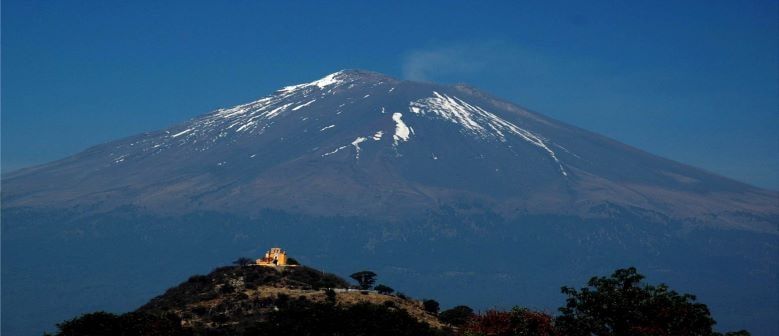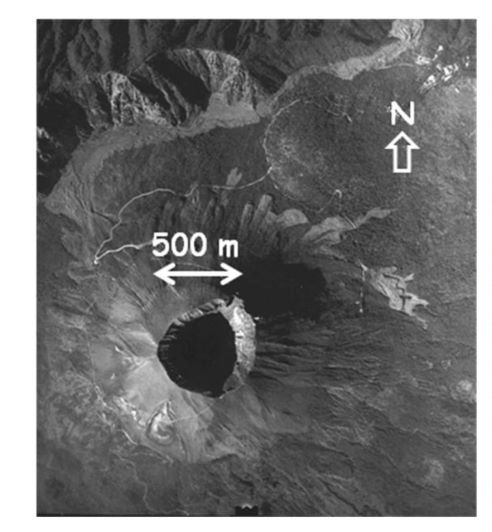Making an X-Ray of The Popocatepetl Volcano
The goal is to determine the dimensions and structure of the volcanic chimney, as well as to monitor possible changes in the dome and the magmatic conduit system.

At the Institute of Physics (IF) of the UNAM, a team of scientists is developing a muon detector, to make an "X-ray" of the Popocatepetl volcano and use a complementary technique to monitor any change in the volcano's activity.
On a global scale, "Don Goyo" is one of the volcanoes that threatens the greatest number of people; an eruption would affect the millions of inhabitants of the states of Mexico, Puebla, Morelos, Tlaxcala, and, of course, Mexico City, as indicated by records of major eruptions in the past. Hence the importance of monitoring it comprehensively and permanently.
The cosmic rays that reach our planet from the Universe, 90 percent of which are composed of hydrogen nuclei (protons), can be useful for this purpose. This type of radiation has such an energy that when it "bombards" the Earth's atmosphere, other particles are produced. Initially, these are the so-called pions, whose rapid decay results in muons. The latter are penetrating particles that constitute the most abundant radiation of cosmic origin, electrically charged, that strikes the Earth's surface.
Arturo Menchaca Rocha, researcher and former director of the IF, reported this in an interview and explained that imaging with cosmic rays is like an X-ray. As we know, X-rays are used in the latter. In this case, the principle of operation is that the denser part of our body absorbs more radiation, so that in the X-ray more "white" areas appear, less veiled, which correspond to the bones; "here it is more or less the same because the muons are attenuated as a function of the density of the matter they pass through".
This technique, used for decades to measure the density of objects, is the same that was used to study the pyramid of the Sun, in Teotihuacan; the application differs because volcanoes are huge, and they are dynamic because they are active, so their interior changes over time, so larger detectors are required. "What is needed then is a monitor, a device that is sensitive to changes."
The university professor acknowledged that volcanology is an advanced science; experts permanently measure, for example, the seismicity and deformation of the volcanic edifice. However, there is one parameter that is difficult to determine: the so-called volcanic chimney, that is, the conduit through which magma and "smoke" ascend until they reach the crater, and which in many volcanoes consists of a complex system of fissures.
Until now, other measurement techniques such as electrical resistivity have been used in Mexico to determine the measurements of the chimney. However, they reach lower resolutions, on the order of 100 meters. In contrast, cosmic rays allow a resolution of 20 meters, that is, they are more "sensitive" to determine the changes inside the volcano.

The objective of the team - also led by Jaime Urrutia Fucugauchi, researcher and former director of the Institute of Geophysics and member of the UNAM Governing Board, and Varlen Grabski, from the IF - is to add new information, such as the dimensions and structure of the chimney, as well as to monitor possible changes in the dome and the magmatic conduit system. "We propose a prototype of the detector, including its data processing system (acquisition, transfer, analysis, etc.)."
Muons pass more easily through the chimney while it is empty, so if it were to start filling up there would be a change that could be detected by this system. The scientist pointed out that, since cosmic rays are not a main source of light because they arrive as rain everywhere, and not uniformly since the atmosphere absorbs them, it is necessary to measure the trajectory of each muon to obtain a good quality image.
The detector designed at UNAM has three planes with a surface area of 10 square meters each; they are made up of 30 rectangular tubes filled with a scintillator liquid. When a muon passes through one of them, light is produced at that point, which is detected, along with its position, by the sensors. This information is stored in a computer and after some time the image of the volcano's interior is reconstructed.
The tubes containing the scintillator material are made of aluminum for practical reasons: in addition to having the required shape, they are commercially available, cheaper, and easier to obtain. Their only disadvantage is that they are not easy to weld. But this design has the advantage that the scintillator can be renewed. "When needed, you can carry drums and change the scintillator fluid." It would be ideal to have three detectors to get a three-dimensional image of the stack, for which more resources will need to be raised; in the initial stage, one will be enough to demonstrate that the technique works."
The detector is sized to capture as many muons as possible, on the order of tens of thousands over three months. The problem is that in a volcano there is such a large amount of matter that the attenuation is very large, said the nuclear physicist from Oxford University.
The prototype would probably be placed at the Tlamacas monitoring station, at almost 4,000 meters above sea level, where the IGF and the National Center for Disaster Prevention already have other instruments; there is electricity and internet service and it is the closest to the volcano's crater.
About this research project, Interior imaging of volcanoes by attenuation of atmospheric muons, progress has been presented in international forums such as the 36th International Cosmic Ray Conference, held in 2019 in the United States; despite the closure of university facilities due to the coronavirus pandemic, human resources from the Physics career have been trained.
El Castillo
Arturo Menchaca announced that in collaboration with his former student Edmundo García Solís, current professor at Chicago State University, another similar detector is being built to study the interior of the Temple of Kukulkán, in the archaeological zone of Chichen Itzá, Yucatán, for which the National Institute of Anthropology and History has already granted permission.
The Non-Invasive Archaeometry Using Muons (NAUM) project will explore the "heart" of the Mayan construction also called El Castillo since it is estimated that under the pyramid we see another smaller one found inside it, which was revealed in 2016 by university researchers, there is an even older one, a third body that could be discovered thanks to cosmic rays.




